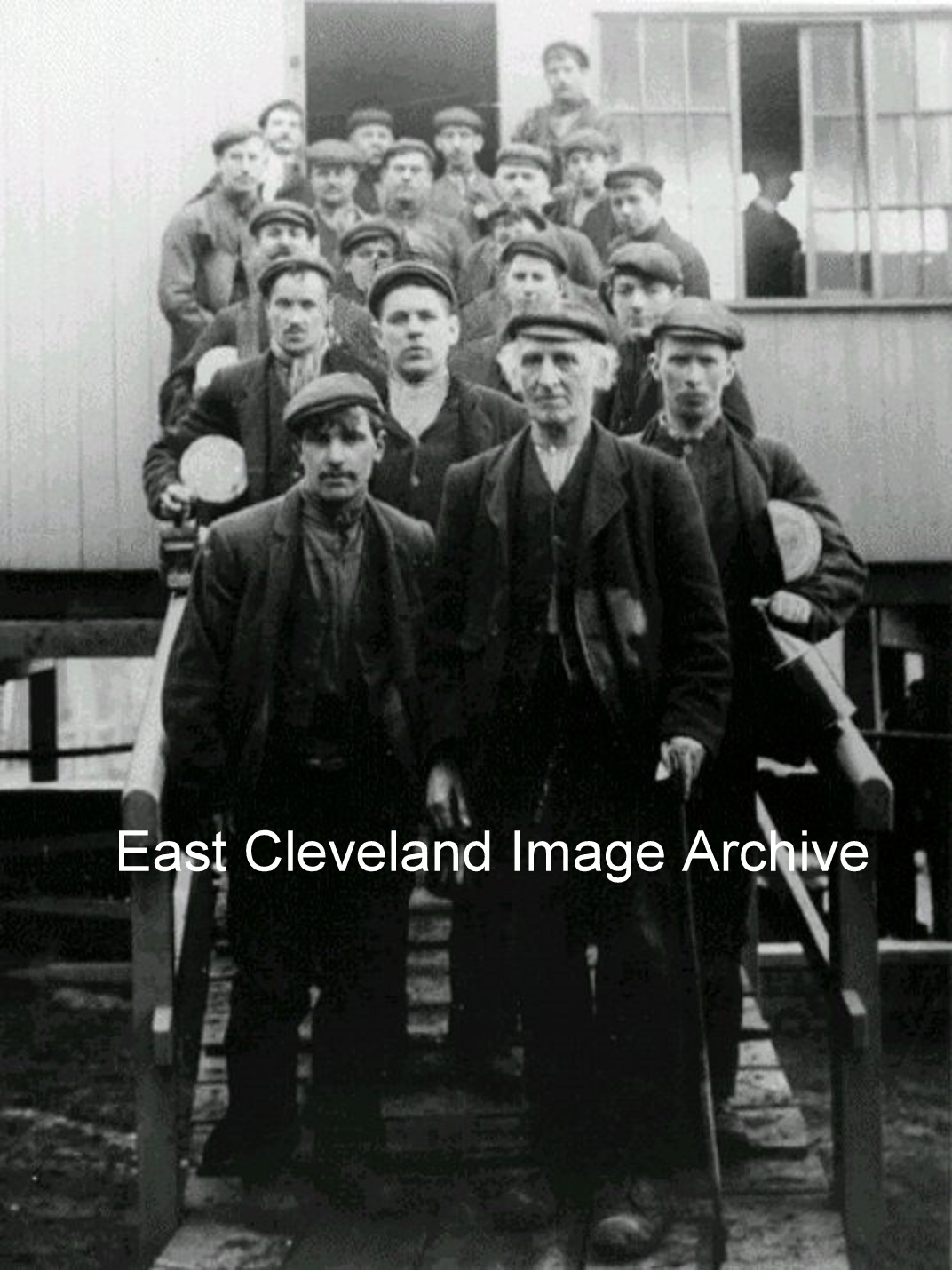
The end of a shift at Lumpsey Mine, again about 1910; at least that is what I am presuming. Some of the men have logs under their arms these would be the off cuts from the pit props. Anyone recognise any of the men in this photograph?
|
|
||
 The end of a shift at Lumpsey Mine, again about 1910; at least that is what I am presuming. Some of the men have logs under their arms these would be the off cuts from the pit props. Anyone recognise any of the men in this photograph? 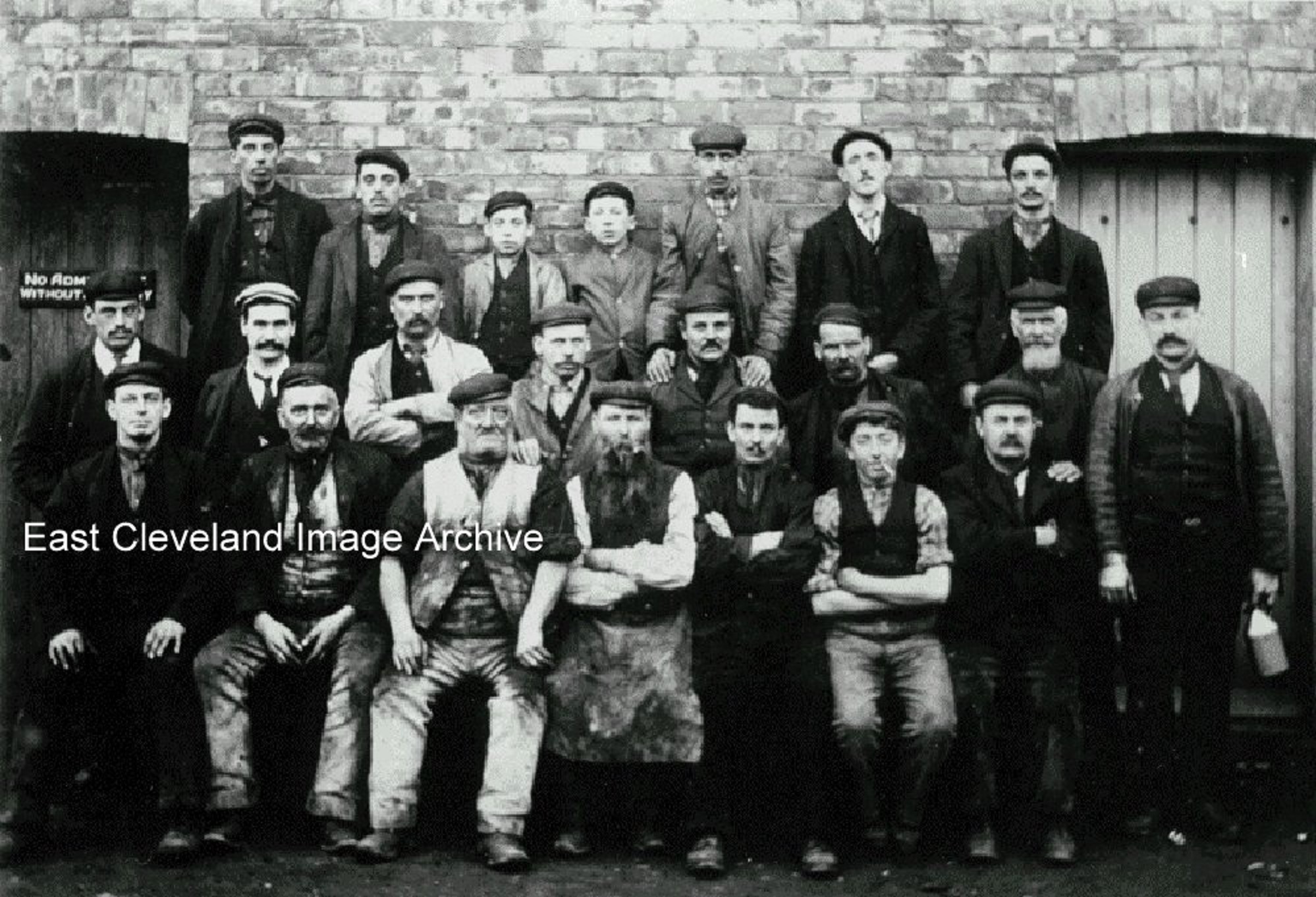 Not the most charming group of men we have ever seen and believed to be some of the work force of Lumpsey Mine, we presume that the man in the middle is a blacksmith? Please correct us if we are wrong. We think the blacksmith is James Kennedy on the photograph, he was recorded as a Blacksmith in 1911, whilst his brother John was listed as a Platelayer Underground. The container held by the miner on the right was for carrying water or cold tea and was known as a ‘Dudley’. Left to right from the back row: B. Catron, J. Wilks, T. Clay, W. Clay, H. Clay, W. Marshall, C. Bealwall, Robert Marley, J. W. Marshall, J. Walton, J. Clay, G. Best, S. Webb, T. Curtley, R. Clough, R. Peacock, W. Cross, T. Jackson, J. Kennedy, D. Annear, T. Marshall, J. Beadon. Donna Wilson contacted the Archive with: “I think R. Marley on this picture might be Robert Marley, born 1879 in Liverton Street, Guisborough; son of David and Anne Marley. David and Anne are my great, great grand parents; I come from Robert’s older sister, Diana Marley; born 1873, she married Arthur Charles Wilson.” Whilst James Wilks added: “J. Wilks is my great granddad who was a lovely man apparently and looks the spit of my dearly departed granddad when he was young.” Thanks to Donna Wilson and James Wilks for the updates. 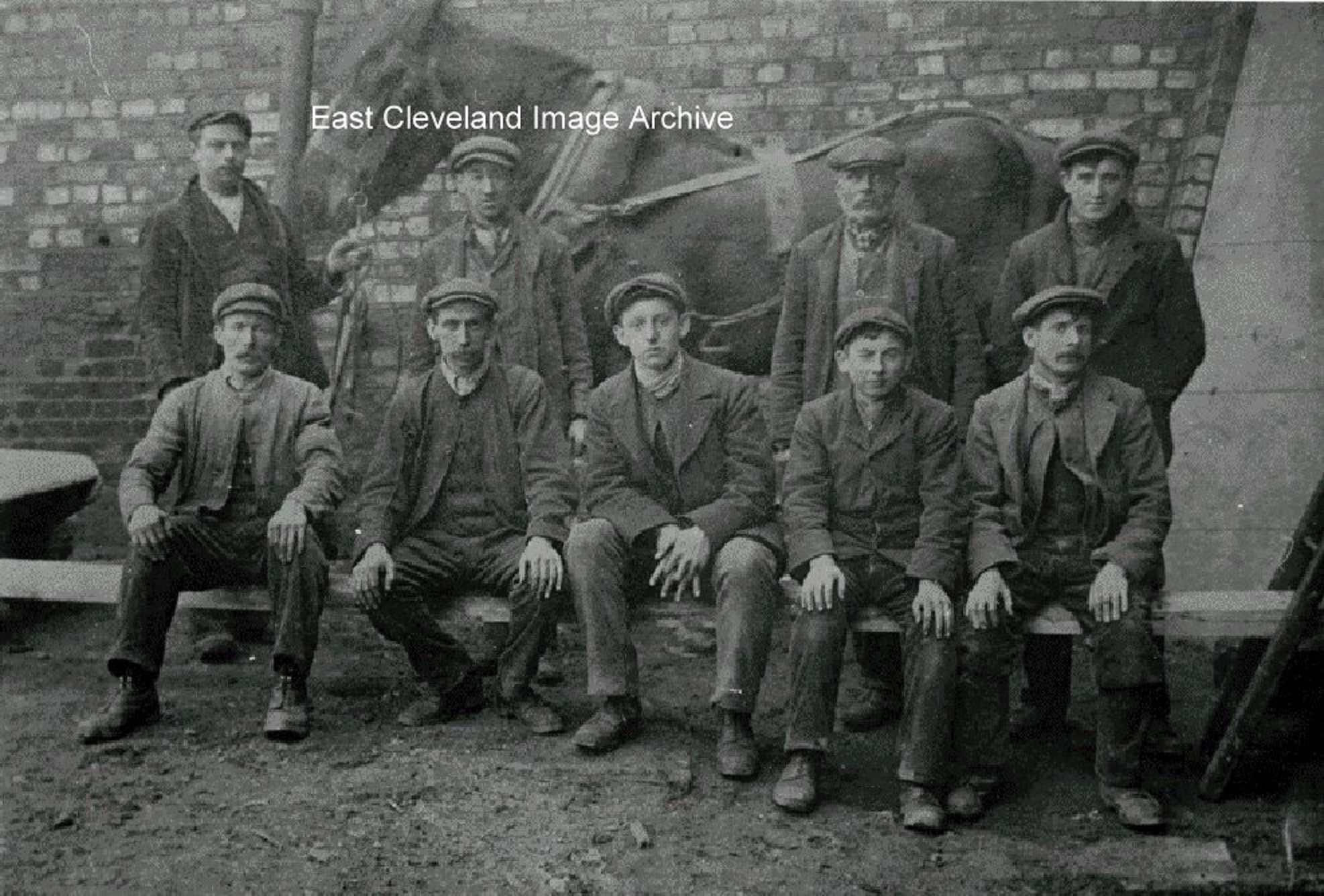 What more can I say about this photograph the heading says it all; the stable hands of Lumpsey mine. The Archive would welcome any information regarding dating this image or even any of the stable hands in the photograph. Image courtesy of Cleveland Ironstone Mining Museum. 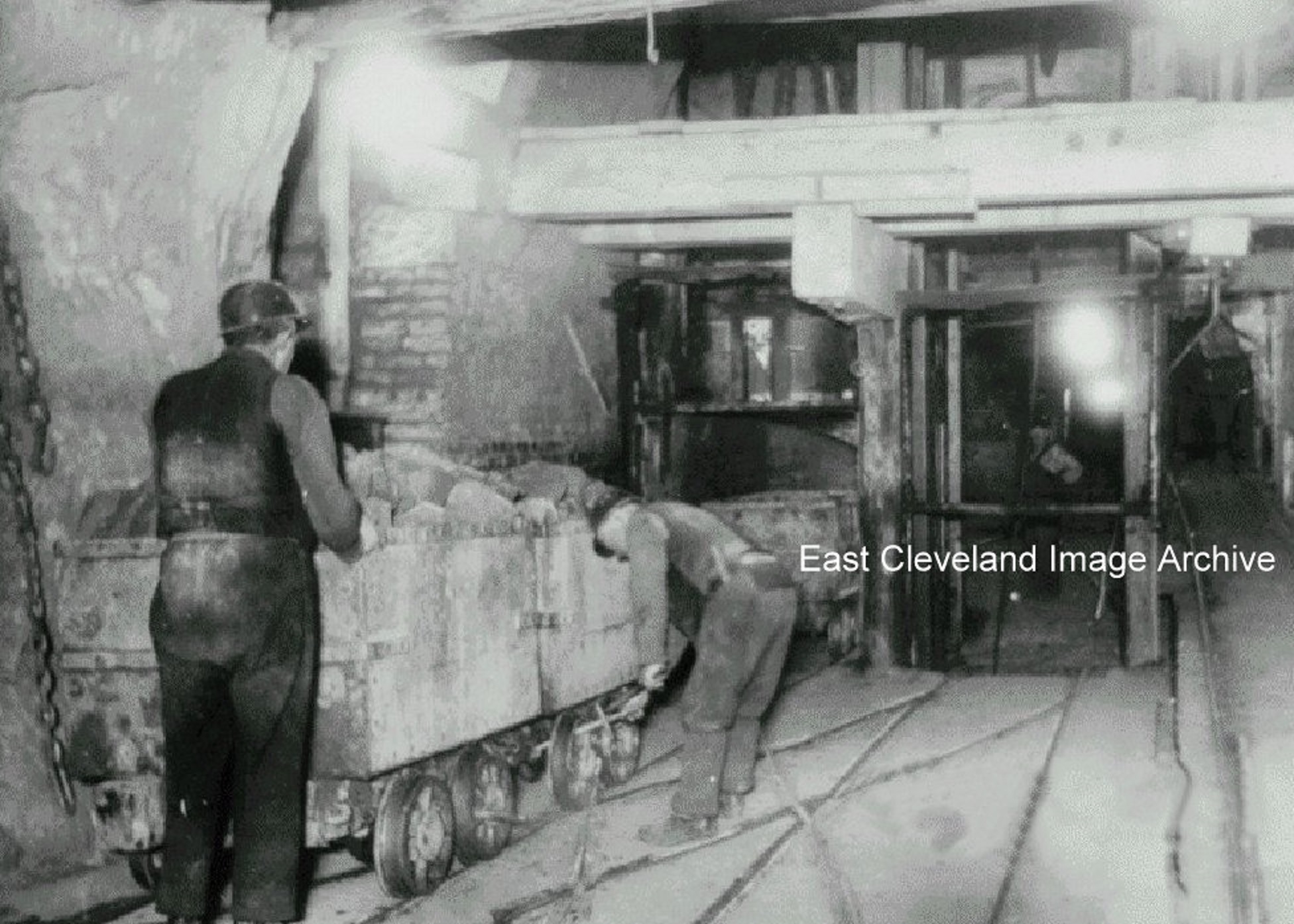 A series of photographs showing Lumpsey Mine, in this one we can see the man bending at the front has put the ’sprag’ (a heavy rod) into the wheel of the tub to stop it moving, the sprags were very heavy. Many of the horse leaders had serious accidents throwing the sprag into the wheel of the moving tub, if they didn’t get it right then it often came back onto their legs. We have to remember that the mines were not level they had to follow the seam of ironstone up hill and down dale. 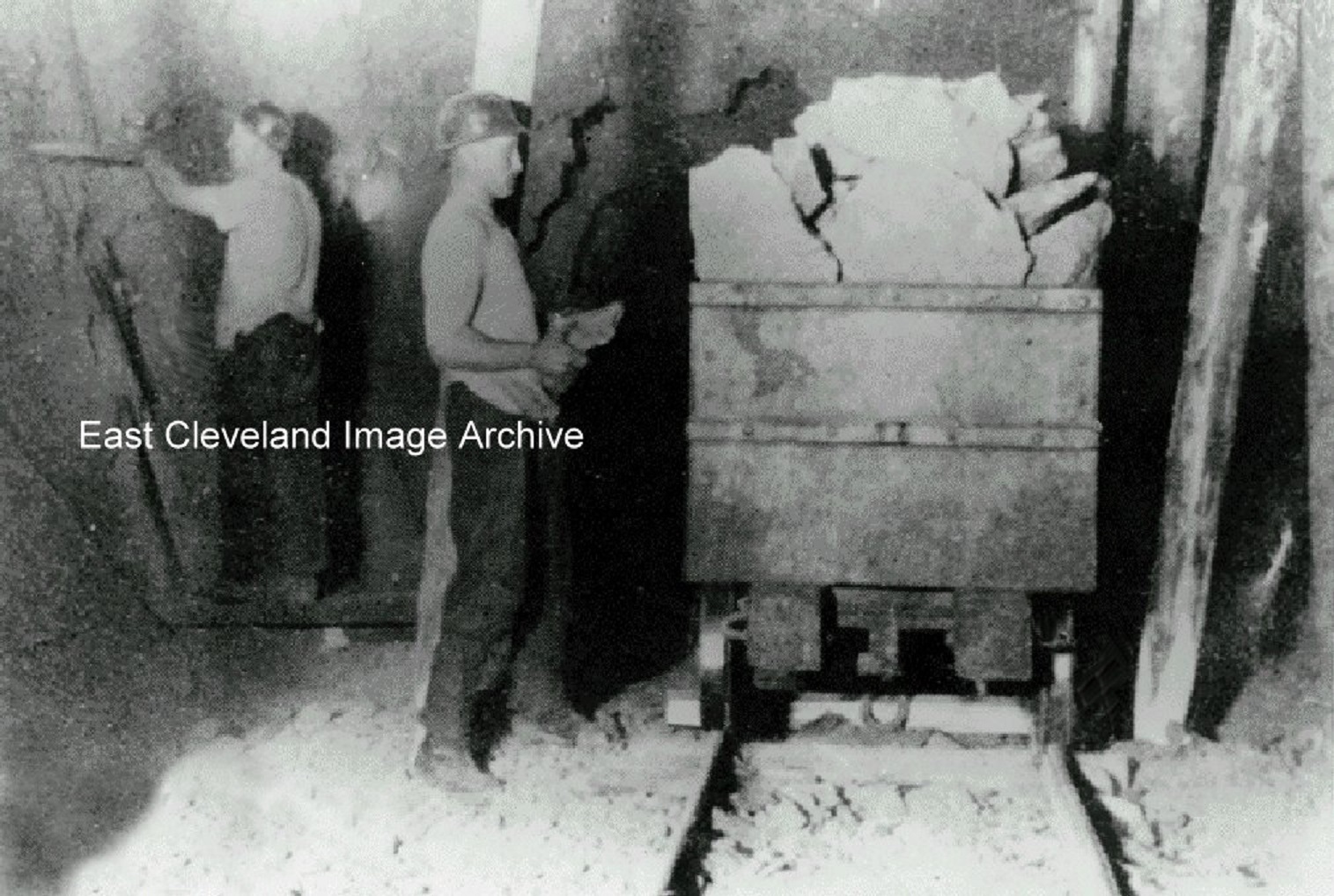 How much ironstone can one filler get into a tub? By the look of that tub quite a lot if you know how to load it. Simon Chapman updated the Archive with: “Note that the guy in the background appears to be using a hand-operated rotary drill, a so-called ratchet. The props are deliberately cut to a bit of a point at the base so that if weight started to come on the working place this weaker part of the prop would start to ‘bunch-up’ and therefore give a visual warning.” Update courtesy of Simon Chapman. 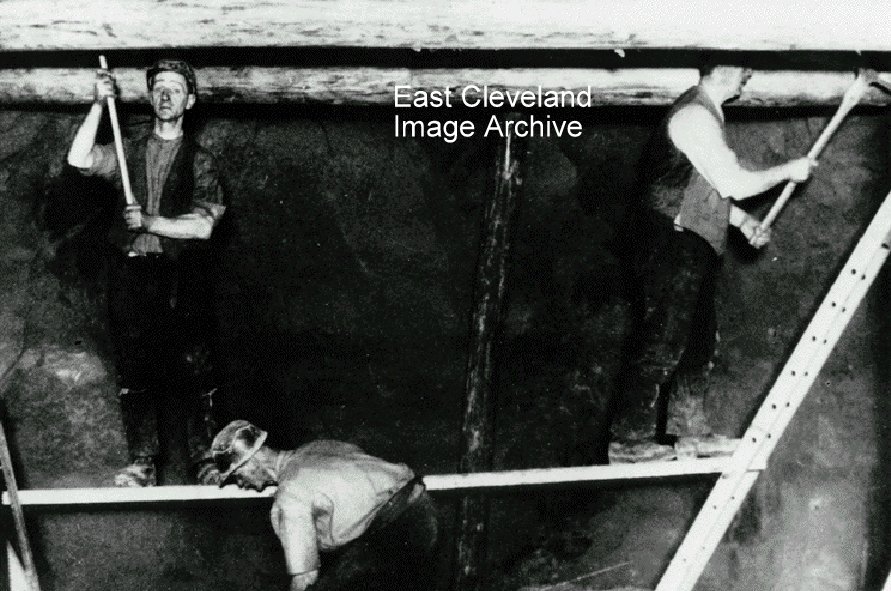 After being puzzled by this image – it’s obviously posed – so was it for a training manual? The ladder on the right looks like a metal ladder, when were they introduced? The loader is wearing a tin hat (safety helmet, bump hat), so it was after the introduction of the safety helmet, but his colleagues don’t appear to be wearing theirs, so it must have been before they became compulsory. Derick Pearson said: “What they appear to be doing or have just done is set the roof support timber. They would under these circumstances chop out a ledge to fit it at either side of the working. They would then add props with wedges as is shown with the prop in the centre. They normally chopped out a seat/ledge for the roof support timber before fitting it into place. This has already been done so it is certainly a pose after the job.” Simon Chapman advised: ”This picture appears in an article on Cleveland Ironstone Mining in the Iron and Coal Trades Review of September 1939 and the photos. are credited to The Yorkshire Post, so the newspaper must have had a recent article about the mines. I was told years ago that the picture was taken at Lumpsey.” Image courtesy of several sources, thanks to Derick Pearson for the insight and to Simon Chapman for the update. |
||
Recent Comments